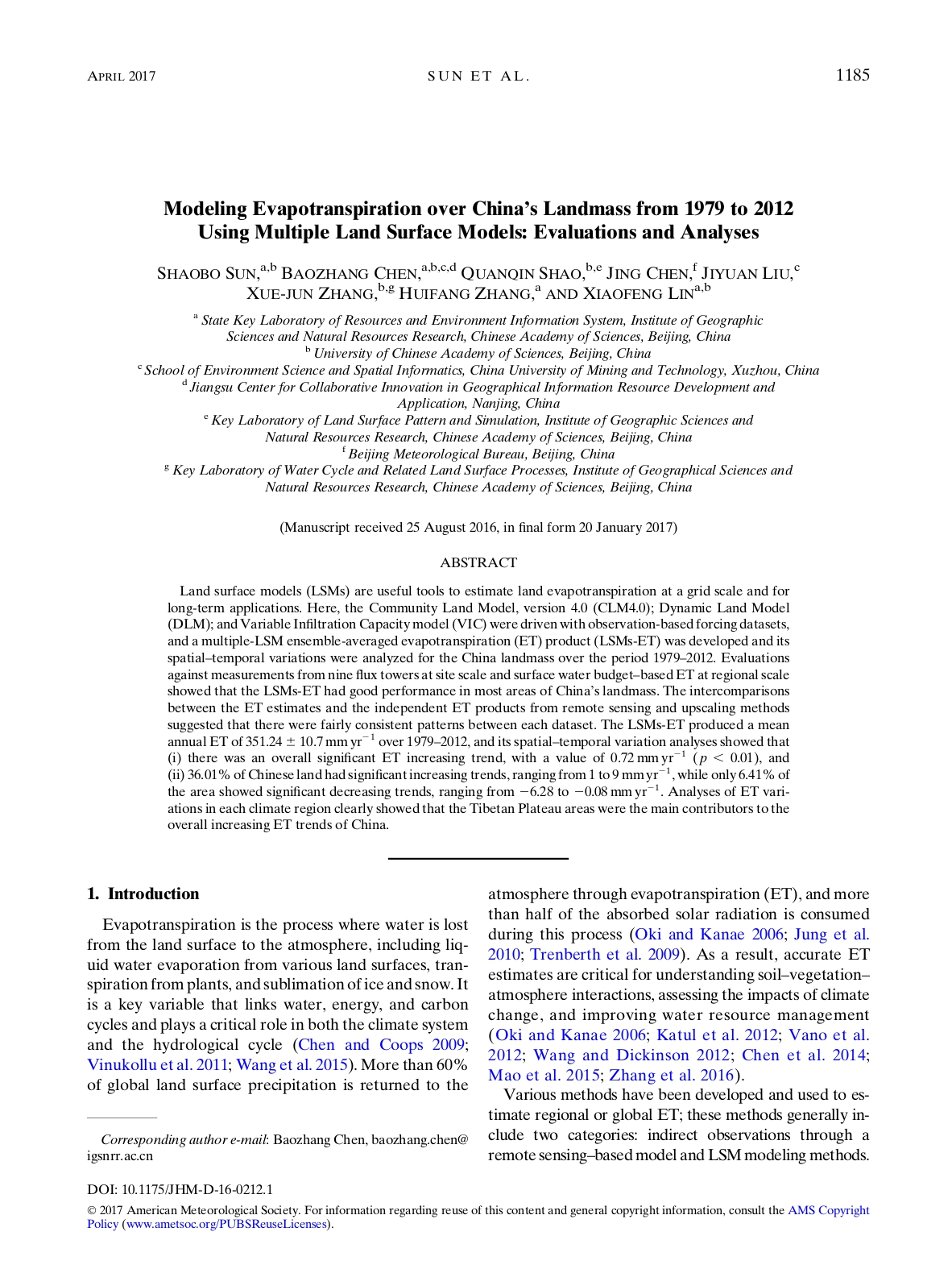Land surface models (LSMs) are useful tools to estimate land evapotranspiration at a grid scale and for long-term applications. Here, the Community Land Model, version 4.0 (CLM4.0); Dynamic Land Model (DLM); and Variable Infiltration Capacity model (VIC) were driven with observation-based forcing datasets, and a multiple-LSM ensemble-averaged evapotranspiration (ET) product (LSMs-ET) was developed and its spatial–temporal variations were analyzed for the China landmass over the period 1979–2012. Evaluations against measurements from nine flux towers at site scale and surface water budget–based ET at regional scale showed that the LSMs-ET had good performance in most areas of China’s landmass. The intercomparisons between the ET estimates and the independent ET products from remote sensing and upscaling methods suggested that there were fairly consistent patterns between each dataset. The LSMs-ET produced a mean annual ET of 351.24 6 10.7 mm yr21 over 1979–2012, and its spatial–temporal variation analyses showed that (i) there was an overall significant ET increasing trend, with a value of 0.72 mm yr21 ( p , 0.01), and (ii) 36.01% of Chinese land had significant increasing trends, ranging from 1 to 9 mm yr21 , while only 6.41% of the area showed significant decreasing trends, ranging from 26.28 to 20.08 mm yr21 . Analyses of ET variations in each climate region clearly showed that the Tibetan Plateau areas were the main contributors to the overall increasing ET trends of China.
5
Modeling Evapotranspiration over China’s Landmass from 1979 to 2012 Using Multiple Land Surface Models: Evaluations and Analyses
Shaobo Sun, Baozhang Chen, Quanoin Shao, Jing Chen, Jiyuan Liu, Xue-Jun Zhang, Huifang Zhang, and Xiaofeng Lin
Penerbit :
American Meteorological Society
Tahun :
2017
epaper
-
No Scan
-
No Klasifikasi551.3
-
ISBN
-
ISSN
-
No Registrasi
-
Lokasi Terbit
-
Jumlah Hal19
-
Label
-
Versi DigitalTIDAK
-
Versi FisikTIDAK
-
Lokasi Rak Buku Fisik//
-
Jumlah Exemplar Fisik Tersedia-




